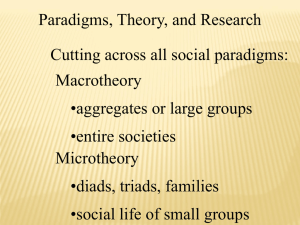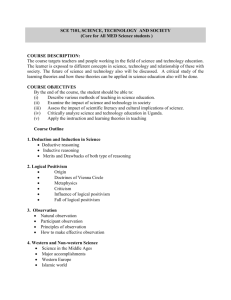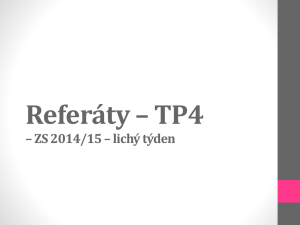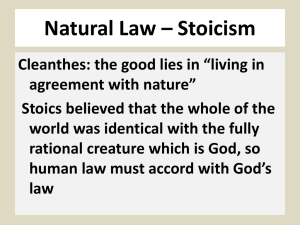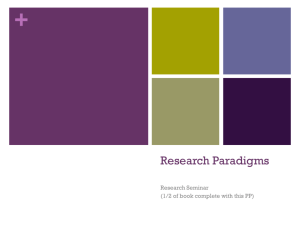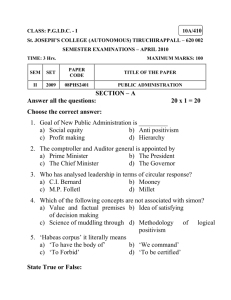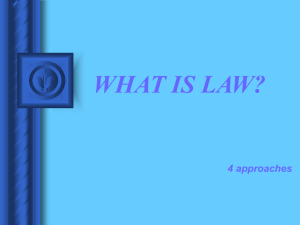ffi PRocEEDI'N'd ru AND
advertisement
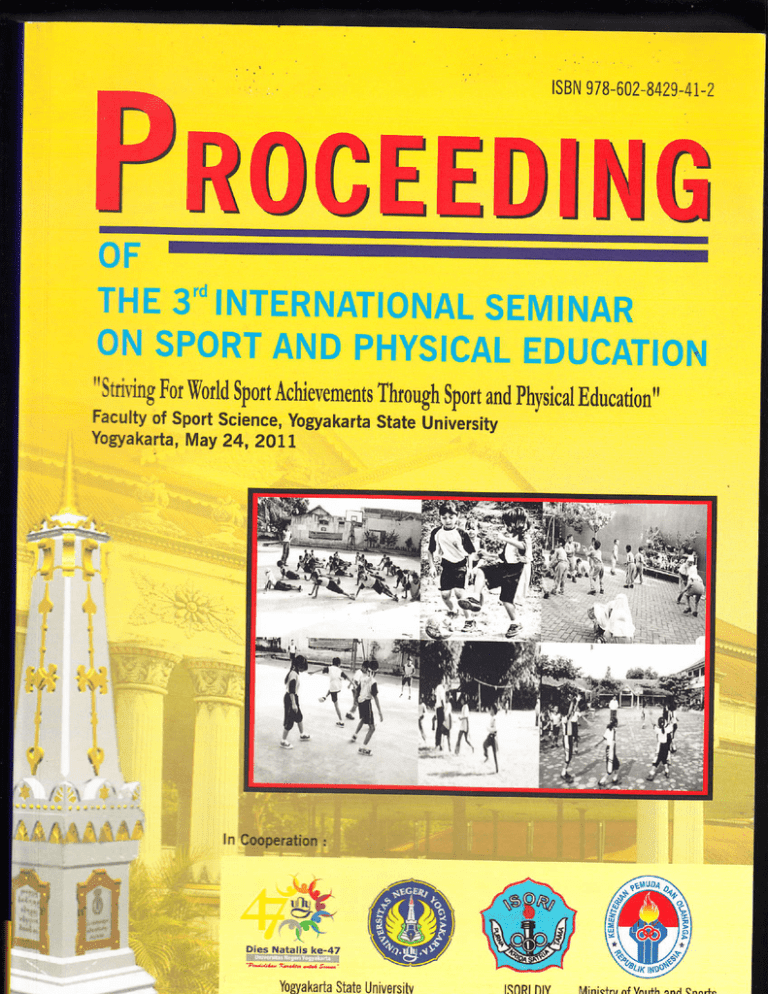
PRocEEDI'N'd
OF
THE 3'O INTERNATIoNAL SEMINAR
ON SPORT AND PHYSICAL EDUCATION
'Striving For \Vorld Sport Achievements Though Spon and physicalEducationrl
Faculty of Sport Science, yogyakarta State University
Yogyakarta, May 24, 2Oll
f-*'
ln Cooperatioo :
#fu
ru
.Jk
*tL
-=t*J\
oies ttatais ke-47
Yogyakarta State Universifu
ISORI
nlY
ffi
fiIini oln,
V^,,+h
e^^.r.
33
BUILDING CHARACTER EDUCATION THROUGH PHYSICALACTIVITIES
(GAMES)
lndahPrasetyawatiTriPurnamaSari,YogyakartaStateUniVersity
34
35
36
37
38
GROWTH AND HEIGHT PREDICTION AS A BASIC ACHIEVEMENTS
SINCE EARLYAGE
Jaka Sunardi, yogyakarta State University....__...............
40
,
41
-?fi
283-&.
IMPACT OF SPORT PARTICIPATION ON CHAMCTER DEVELOPMENT
A MYTH OR REALITY?
Joko PuManto, yogyakarta State University.__.............
293 -
2g
FIVE-STEP MODEL OF EXERCISE-INDUCED MUSCLE HYPERTROPHY
CONTRIBUTION OF SATELLITE CELLS
Karti ka Ratna Pertiwi, yogyakarta State University......
300 -
36
THE EFFECT OF LEARNING METHODAND MOTOR EDUCABILITY
LEVEL TOWARDS
THE SKILL MASTERY OF BASIC TECHNIQUE IN PLAYING SEPAK
TAKMW
I Ketut Semarayasa, Ganesha University of Education ...
307 - 311
THEORY OF MULTIPLE INTELLIGENCES APPLICATIONS
IN PHYSICAL EDUCATION IN ELEMENTARY SCHOOL
Komarudin, Yogyakarta State
39
277
University..........
..
..
BIG BALL GAME WITH KORFBALL
Lilik lndriharta, UpN "Veteran,, yogyakarta......................
IMPROVING THE STUDENTS'EMOTIONAL INTELLIGENCE THROUGH
THE PHYSICAL
EDUCATION
Lismadiana, yogyakarta State University ...................._....
312 - 3't7 '
318 - 325
326-32s
WHEN POSITIVISM PAMDIGM BECOMES OVER DOMINANT IN
PHYSICAL
EDUCATION
M. Hamid Anwar, yogyakarta State University..................
42
APPLICATION OF AWARENESS TRAINING MODEL TO ENHANCED
PSYCHOLOGICAL
ASPECT OF VOLLEYBALL PLAYER
Nasuka, Semarang State_University
43
44
330 - 333
PHYSIOLOGICALAND PSYCHOSOCIAL PROFILES OF FEMALEATHLETES
IN
"MASCULINE" SPORT (A DESCRIPTIVE STUDY ON
FEMALE ATHLETES
PARTICIPATING IN SOCCER, TARUNG DMJATAND BOXING)
Nina Sutresna, lndonesia University of Education......._.....
3U-y1
u2-u7
THEMPEUTIC MODALITIES IN RECOVERY PHASE TO ENHANCE
ATHLETIC
PERFORMANCE
Nov ita I ntan Arovah, yogyakarta State University ...........
I
PI(f,tIDIf,€
OF
IHE
3- INIERI{AIIOI{AT
SEMITIAR OI{ SPORT AiIt} PHYSICAT EDUCATIOiI
348 - 33r
WHEN POSITIVISM PARADIGM BECOMES OVER DOM
PHYSICAL EDUCATION
By:
M. Hamid Anwar
Yogyakarta State University
Abstact
There are so many definitions about physical education, but one certain thing that always
concept is that physical education uses physical activity as a medium to realize the orientatio.r c|
process. lronically, so many misconceptions happen in the pysical education teaching learning
activity that is supposed to become a medium to get the educational goal, precisely have becarne
This fact is supported by so many positivistic method in physical education sains development.
As matter as general understanding, positivism does not believe on metaphysics dimension.
education has a certain object that cannot be separated from metaphisics system, that is human
Thus, positivistics way of thinking has so many weakness to explore human beings' (students')
not something wrong lvtlen positivism approach is implemented in the physical education developrnert
when it dominates, physical education is going to fall into mere technique and biomechanics
education will becomes sains system that does not have sense of humanity values.
Keywords: Physical education, Positivism, Paradigm.
INTRODUCTION
Humans from various civilization knowand employ physical activities as their living ritual. As seer
cultures, it is important to note that only few of the activities are similar to today's sport. ln
physical activities were closely related to local religious practices.
For decades sports have been used to depict competition and rules based physical activities.
human from daily routines. sports and games play various roles for centuries. ln old Greek, feasts
and games, like when people worshipped the gods or as parts of funerals. Homer, a great writer frrn
depicts sports in his work entitled l iad and odyssey. physical contest like running, wresfling,
hunting are preferred sports in old Greek era. Historical artefacts like paintings, statues, and
that sports were also played in other old civilizations (Hutchinson and Lee, 1959: 5).
ln Rome empire, sports tended to be form of amusements for public. They were conducted to
powerand authority of politic leaders. Then, in middle era, folk games clearly reflected gap of gender
$ar
class in society. Farmers, knights, and clerk men had different kind of sports fitting their social
pattern continues until the era of renaissance in sort of countries in Europe. ln the enlightment
era,
closely liked to local cultures and ideology. After industrial revolution, sports were bordered by individrjds
since 1920s, sports totally changed; global society got more complex as complex as the growth cf
economy, culture, and education (Coakley, 2004: 92-93).
ln undang-undang sistem Keolahragaan Nas/bnalNo. 3year2005, sports can be divided into three
1) sport for achievement, 2) sport for education, and 3) sport for recreation. Referring to formal termi
lndonesia, sport is labelled as education for Physical, health, and recreation. Further, based on the
Grniculum , physical education is defined as follows
33)
I
PRoCEEDHG 0F THE 3d TNTERNAT|0I'IAL SEMil{AR 0t{ Sp0Rr A}tD
pHystcAl
EDUCATT0il
c :6cdty an integral part of the whole educational system aiming at developing
':rEss. critical thinking skills, social skills, reasoning and moral behaviourthrough
ct$'c'es (2003: 5)'
smde definition for physical education
is that it is not teaching about physical. ln
are not the main goal, but only the means to achieve the goal. tndeed, physicat
frun the teaching process, but that is not the main goal.
rTar-, :eacners and practitioners misinterPret the physical education- ln many cases'
the assesment point of the teaching. This might be a weak assumsion due
prior examination puts motoric skills as assesment point.
-comes
EErs
E
:r
observe research room of some Physiscal Education Teacher Education in lndonesia'
Ecilers and s{udents concern more on physical matter only. Experiment approaches
are strong. ln result, physical education concern on problem of biomechanic and
a
tok
on cuniculum structure in some PETEs in lndonesia, it is clear that bioscience
Physical education studies more problems of empirical data as a spesific mark
dring.
gate that some big amount of budget for education is far from the root of the society.
iucaEon b€comes an alineating process placing students far away from real problem, and
sdve the rpoblems (Freire, 1996: 23). Education is too busywith the discipline development
rnplication in society. Thatalso hits physicaleducation. some sludies are soscience that
='Ec
?drty and humanity dimension that
he
rrrB
is full of values and metaphysical problems.
(1798--1857), A French philospher known as a father of positivism. Positivism derives
factual. tn positivism, our understanding cannot exceed facls. Thercfore, empirical science
Thefore, it is unqustionable that positivism denies philosophy known as metaphysisc'
of modern philosophy, positivism paradigm has big influence. The result can be seen
Eyelopment of science and technology. various kinds of technology findings become the
Ent of a result and a process from experiment approach that marks the way of positivism.
lfrr'Yism E "positivus, ponere"meaning to put. The complele meaning of positivism is a common
position concerning on factual aspect of science. Generally, positivism tries to explore
on the empirical data based sense. ln other words, positivism is a philosophy stream that
(Lorens
as the only and right source of knowledge and denies cognitive value of metaphysic
3s8).
I
as a philosphical stream emerged in French in nineteen centuries. Auguste Comte pararelizes
nnitiation of world scientifically whose main job is limited on surface depiction, far from the five
He tries to prove that positivism stands on materialism or idealism. Due to this material,
this madzab is a sad poridge, a middle party of philosophy, destroying materialistic and idealistic
certain probem'.
n order to get a structured society, soul and mind must be fixed. Mind, to him, consists of 3 levels.
s teology explaining eveMhing with anay reasons exceeding destiny. Second level is metaphysic
tyoygh abtraction. Level three is positif level neglecting the serious and determined cause and effect.
era of Comte should worship positif. Spirit of positif should be included in any discipline like in
physic, and biology. What is not positive is not experienced and therefore better to be included to
PROCEEI)II{G OT THE 3'd IIITERI{ATIOI{AL SEMII{AR O}I SPORT AI{D PHYSICAT EI}UCATIO}I I 331
rn other sciences, positivism arso becomes the foundation.
H. Taine (1g2g-,rg93) arso uses it. rn soo
Emire Durkheim (1958-1917) arso bases on positivism. This arso
happens in Engrand, especiary by
Stuart Mi[ (1806-1873). This applies to all system (prof. l. R. poedjawUatn
a, 1gg7: 120_.121).
Historically, there are three phases in the development of positivism:
1. The first supporters are comte,
2
E. Littre, and p. Laffitte (French), J. s. Mi[ and
spencer (Engrand).
problems in theory (Comte) and logic (Mill), the main seat positivism
in
in on sociology.
second phase is in 1870-189os and relates to Mach and Avenarius.
Both leaves formal knowledge on
objeciive objects becoming the mark of early positivism. ln Machism, problem
of innitiation is defined fror
extreme psicolgism perspective, included in subjectivism.
The growth of rast positivism or neopositivism is rerated to wina
circre activity (o. Neurath, carnap,
Frank) These two groups combine atomism, logism, logic positivism,
and semantic. The main
or fri
stream is philosophical problems on language, symbolic logic, structure
"on""rn
of science trace, etc. rne
supp{
take a pece way between logic and mathematic, as well as formal
ephistomological problems. 1t-orens oagri
1996: 860).
scfi
POSITIVISM PARADIGM IN PHYSICAL EDUCATION
Education is a conscious, well prepared and systemic effort to
do changes toward better quality of studert
That is the essence of the definition of eduction. Physical education
should attempt the same. ln aggre€
concept, physical education is an education that makes use of activity
of physical education. object of sh,|d
believed till now is 'human in movement' meaning that movement
is not waht should be observed, but more q
the berief that any humanity aspect is movement. Therefore, the
core point is the movement
considering human and essence of humanity, all dimensions of
humanity cannot be separated. ln som
discourses, problem of soul and body seems to be confrontated. ln
brief, in any debateproblem of talking abcrJ
humn cannot be separated from its metaphysic aspect.
Further, what is the relation between metahysisc and education?
George R. Knight answers by emphasizirt
that old human society and the modern one in their socio-economy
and scince are affected by perspective J
cosmology, teology, anthropology, and ontology. Therefore, beliefand practice
of education cannot be separatq
from the metaphysic believed. ln other words, metaphysic is a
study on ultimate reality where any concept ir
education must be leaned to fact and reality, in order to be free from
illusion. A different metaphysic belief wil
bring different system and approach in education. Even, metaphysisc
beliefdirecty influences more on educationa
issues such as the core of curriculum, teachers'role, teacher-students
relation, individuals and society, etc.
This is closely related to the special mark of positivism paradigm
which does not believe in reality in thG
metaphysisc degree. To positivism, the truth in metaphysisc cannot
be verified scientifically so that it does nd
deserve to be acknowledge as a science truth.
Further, one critidsm always emergds related to this paradigm
isthatthe nature ofthe developed research in
this way of thought is a verification to the existing theories. Therefore,
no new findings can be epected in the
physical education development. The wide range
of horizone of physical education covering all dimensions ol
humanity is trapped in the nanaow and dry mechanical and
biological problems.
ln this sense, it is clear that a force of method happens in
a knowledge tradition. Education science which is
included in humanioru (geisteswissenschaften) is apprcached,
studied, and analyzed
through the eyes ofscience
(naturewissenschafen). Ephistomologically, two kinds
of science have different characteristics. The principal
different lies on the problem of formal object in relation to the
cause effect, and reasoning. science needs
reasoning (erKaren), and humaniora uses involvement or
understanding
(verstehen)
ot hetmeneutics.
The term education in lndoensia is always linked to the representation
of two harmonious processes; transfer
of knowledge, and transfer of value. The first process, with positivism,
might result in no problem. Howeve( it is
332
|
pRocEEoHG 0F
THE 3d rt{TERt{ATr0ilAr- SEM|}'rAR 0r{ spoRT Ailo pfiysrcAL
toucAil0r{
later
any teaching through a unity lvhich
i-= - ghly expected to get the meaning of
.
Cnc€ again, positivism fails in this area'
ru
rr.-3-.rdeflnitionsandpracticesisexpectedtoputphysicalactivitiesasamedium
tr #a
:-:;;ffi
rr *.
From various studies' to
soal of education
il;.i*"
ce gained.
rEffi :'€t physical
f *
***"'
achieve:::"t::':i"""::"':i;
relevan
rherfeore' a pattern of education sivins
positivism
education is dominated bv
values' and humanity analysis disappear
rn"nr
?:i':]lY.:ll'^,:::"::::*:
'"anings'
"iltimeniali*,"*'t,
>,'sicaleducationfallsinthecornerofbiologicalandmechanicalspacethatdisallow
t't Sffity
tssues and Contoversies' (Boston:
1,"*-i
rwanan,
"i
"r,
iffi[ffi;;;;;;;
n
"
o"n lrl"toaofogO,
./ umal
,*"'
t]:!!I' y:1::9:Y:i
rematik
;^N AUGUSTE coy]:
l::::
I""uan
Nomor 3
Filsafat' Desember 2OO3' Jitid 35'
diteriem
aho"
.lasmani SMA
sMA & MA Departemen
Jasmani
Depdiknas: 2003
Pusat Kurikulum' Balitbang
Gramedia Pustaka Utama' 1996)
ffid;l'-ru*
:.;;;
--
Mccraw-lll1i!-0:l'33;
^^ o^-'ri^itian
Pendidikan
t"'"i"t"n
a*"f",t, 1,Lf^rArPT'
PROCEEDING OT THE 3'd
SPORI AIID PHYSICAL EDUCAIION
II{TERI{AIIOI{AL SEMITIAR OII
I
333
